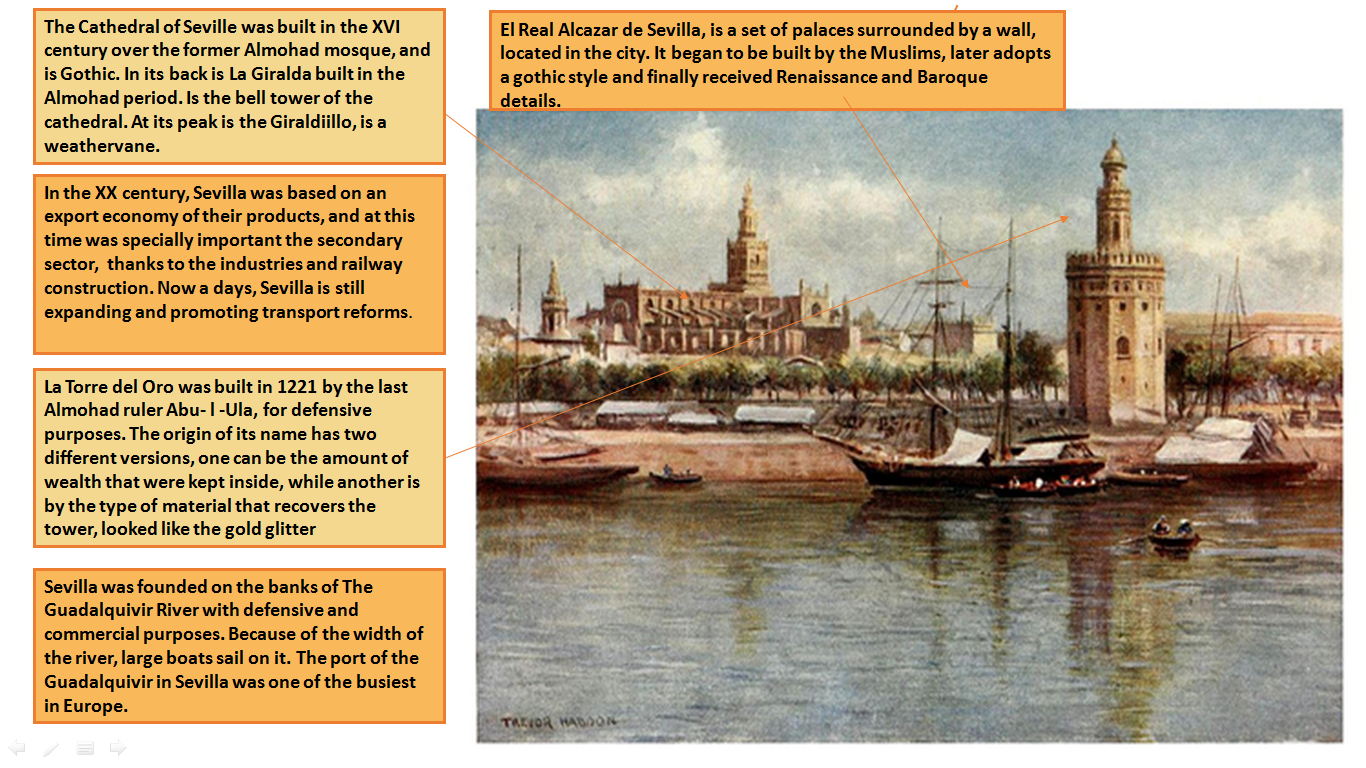SEVILLA (Trevor Haddon, 1904)
This image is a watercolor by Trevor Haddon, painted in 1904. Trevor Haddon was an English watercolorist who performed most of his work traveling around Spain, especially in Andalucía. In the picture we can appreciate the city of Sevilla with its Cathedral, Giralda, Torre del Oro, Real Alcázar and the Guadalquivir River.
Sevilla is located in the south of Spain, Andalucía, within a large alluvial plain of the lower course of the Guadalquivir River. This city holds a lot of history and has different versions of its origins. The most accurate of all tells that the Romans entered during the Second Punic War at what the natives called Ispal. Julius Caesar romanized the name and step to be Hispalis. In the middle Ages, after numerous wars, the territory turned to be Visigoth and Christian. Later became a Muslim territory called Isibilia, a head of Cora, and over the years became an independent territory with the name Ishbiliya. It was in this period when Sevilla began to grow culturally. Thus, most of Seville heritage is influenced by Muslim characteristics. The city was surrendered to the Christians in 1248, and most of the Muslim buildings were rebuilt by Christians with completely different characteristics. In Modern Times, Sevilla became one of the busiest commercial ports in Europe and it experienced a huge economic boom that was reflected in its Baroque architecture and town planning. From the XIX century on, Sevilla has updated both its industrial activity and its infrastructures, and it began to expand as a significant metropolitan area.
This city has a defensive origin so it was a walled city. The center of Sevilla is the old quarter, El Barrio de Santa Cruz. It has an irregular plan with narrow streets, it belongs to the type of Muslim towns. Although, in some parts becomes radio centric, as we approach to the outskirts, the plane is orthogonal. In the river port there is a modern part that does not belong to Muslim characteristics, it is just a renewal. The Guadalquivir River divides Seville into two parts, leaving aside the district of Triana. It was from the Guadalquivir River where Columbus boats departed to America in 1492, because this river is wide enough for large size boats to navigate. Due to the same reason Sevilla has always been a city for maritime trade.
The city has a rich heritage, and most of it is located in the center. In the background we can appreciate the Cathedral de Santa María de la Sede; it is Gothic and was completed in 1507 by Ysambret and Carlin, and built over the old Almohad mosque. Behind the cathedral we can see the Giralda; it was the minaret of the old mosque and was built during the Almohad period, between 1184 and 1198, by the architects Ahmed Ibn Baso and Alí de Gomara ended. Now the Giralda is the bell tower of the cathedral and its peak is the Giraldillo, which is a weathervane. We can also observe the Real Alcazar de Sevilla, that is a set of palaces surrounded by a wall; it began to be built by the Muslims, later adopts a Gothic style and finally received Renaissance and Baroque details. In the foreground, on the banks of the Guadalquivir River, it is possible to appreciate the Torre del Oro, built in 1221 by the last Almohad ruler Abu- l -Ula, for defensive purposes.
In the first half of the XX century, the time of this painting, Sevilla was one of the most populated cities of Spain. It was based on trade economy and had a lot of weight the secondary sector thanks to the industries and railway construction. Nowadays, Sevilla is still expanding and promoting transport reforms.
Ana Romero Vergara

